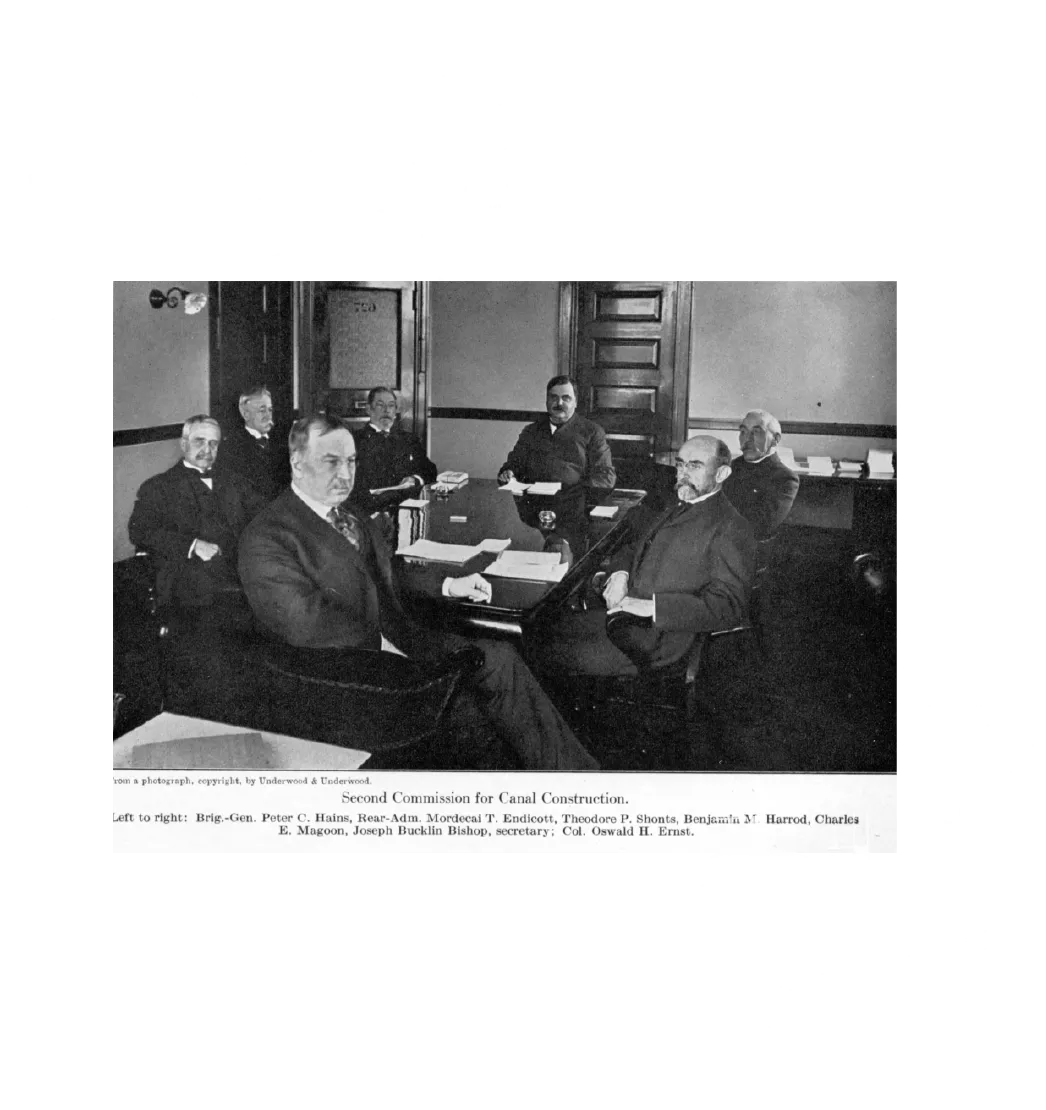
- August 15, 1914
Panama Canal
On August 15, 2014, the centennial of the Panama Canal highlighted a monumental chapter in Rensselaer Polytechnic Institute’s 200-year history. The ambitious canal project saw a convergence of Rensselaer engineers from 1855 to 1914, starting with the Panama Railroad to the canal’s completion. Notables like Gilbert Taylor (Class of 1844) and Walter Dauchy (Class of 1875) spearheaded early endeavors. The vision broadened with Rensselaer alumni, like Estevan Fuertes (Class of 1861) and Aniceto Garcia Menocal (Class of 1862), pioneering potential water routes. With the US taking the helm in 1903, seven Rensselaer engineers played pivotal roles in shaping this engineering marvel. Among them, H.H. Rousseau (Class of 1891), appointed by President Roosevelt, significantly impacted maritime structures design. This illustrious involvement not only marked a historic first for Rensselaer but also a lasting legacy in global engineering lore.
- October 1, 1918
Student Army Training Corps
In a historic pivot during its rich 200-year legacy, Rensselaer Polytechnic Institute transformed into a military training ground in the autumn of 1918, amidst the dire exigencies of World War I. The War Department, recognizing a crucial need for adept soldiers, birthed the Student Army Training Corps (SATC) in February 1918, envisioning a dual haven of academic and military nurture for young men. On October 1, 1918, the SATC commenced its mission across 525 educational realms, with Rensselaer being a vital cog. Voluntary yet earnest, the initiative turned the institute into a microcosm of military rigor and scholarly endeavor, inducting 550 student soldiers and 120 student sailors under a disciplined regiment. Though brief—owing to the war’s armistice on November 11, 1918—the venture encapsulated an intense, condensed curriculum, echoing the bittersweet urgency of the era. A historic blend of martial and educational sagas, this epoch showcased Rensselaer’s ethos of adaptability and service, engraving a timeless chapter in its enduring chronicle.
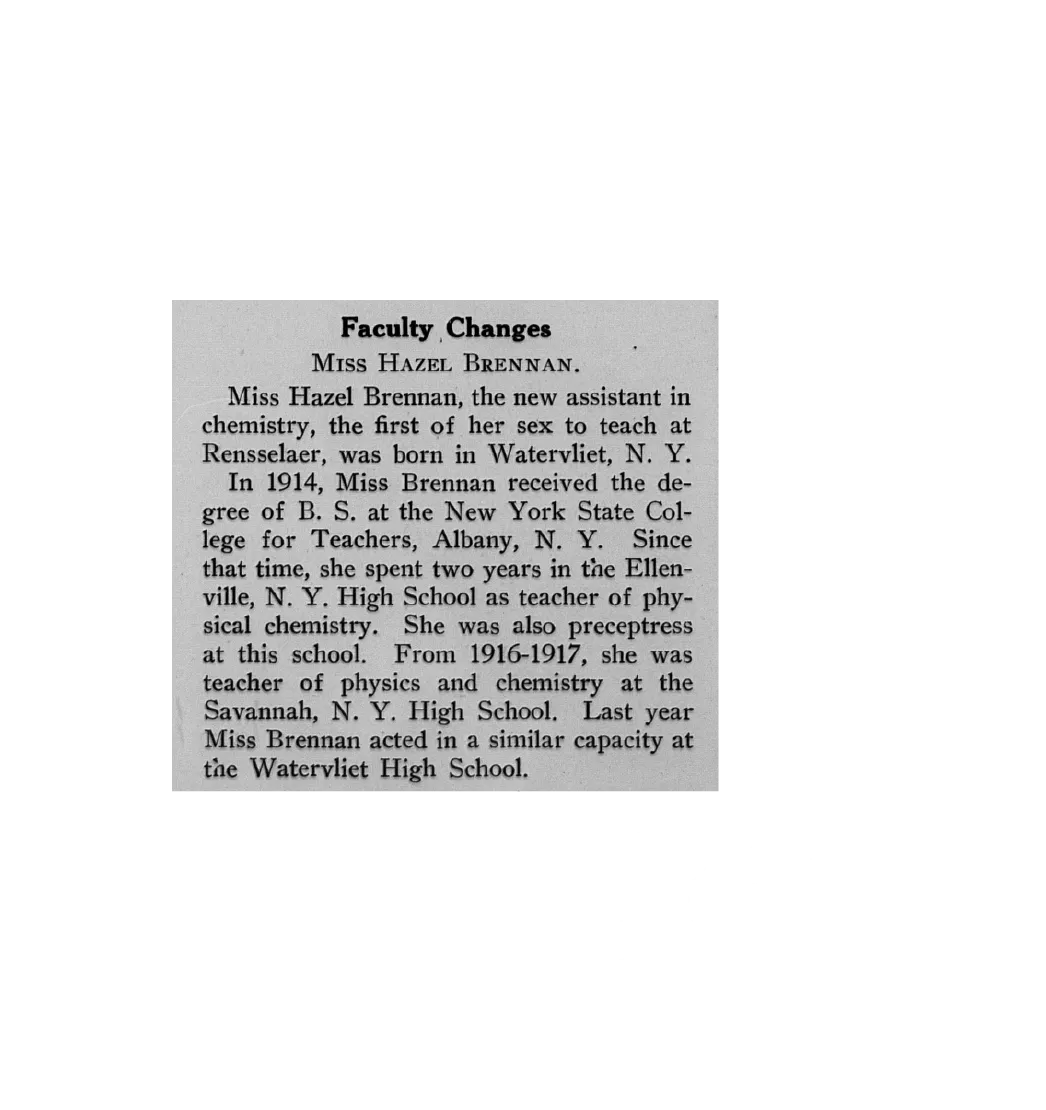
- Fall 1918
Hazel Brennan
In the autumn of 1918, amidst the somber backdrop of a world at war, a ray of progressive light shone through the halls of Rensselaer Polytechnic Institute. As documented in the December 1, 1918 edition of the Polytechnic, Miss Hazel Brennan etched her name into the annals of Rensselaer’s 200-year storied history as the first female instructor, steering the helm of chemistry education. Her appointment didn’t just defy societal norms of the era; it ushered in a dawn of inclusivity. Following her groundbreaking venture, Marie de Pierpont joined the academic tapestry in 1919, further bridging the gender divide. Like the pioneer female graduates of 1946, these trailblazing women shattered the glass ceilings within the scholastic bastion during tumultuous wartime. Their audacious steps within Rensselaer’s revered corridors didn’t merely echo within the institute but resonated through society, heralding broader acceptance and opportunities for women, thus marking a seminal moment of evolution in Rensselaer’s illustrious chronicle.
- 1919
Marie de Pierpont
In its rich 200-year tapestry of pioneering firsts, Rensselaer Polytechnic Institute celebrates Marie De Pierpont, the inaugural woman to grace the title of a full professor at RPI. Beginning her journey as the second female instructor in 1919, she illuminated the halls with the eloquence of French Language and Literature until 1929. The dawn of 1930 saw her ascend as the Professor of Modern Languages, a cherished role she embodied till 1932. As we revel in our bicentennial, we toast to Marie de Pierpont and the cascade of trailblazing women she emboldened. Here’s to unfolding another 200 years filled with groundbreaking ventures and indelible firsts!
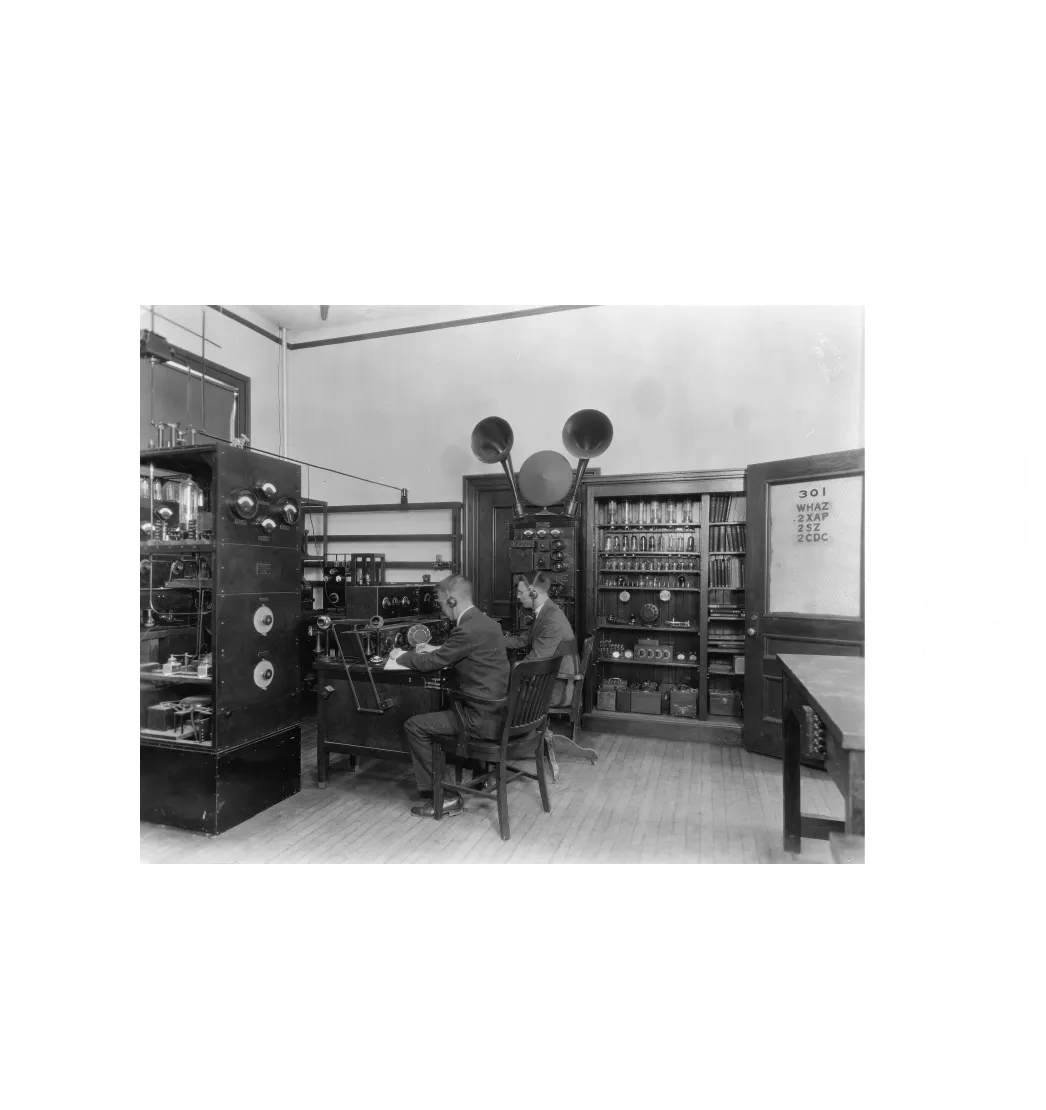
- 1922
WHAZ Radio Station
For the first time in its illustrious 200-year history, Rensselaer Polytechnic Institute unveiled a milestone that resonates through the airwaves to this day. In 1922, RPI inaugurated its very own radio station, WHAZ. Thanks to the generous patronage of the Roebling family, and steered by the adept hands of the Electrical Engineering Department, WHAZ not only embarked on a historic broadcast journey but also earned the prestigious title of the first college radio station licensed as a regular Class B broadcaster. Towering above, the antennae atop Sage Laboratory gracefully dispersed sonic waves that traversed an astounding distance, establishing a record by reaching the serene shores of New Zealand, nearly 10,000 miles away, in February 1922. This remarkable venture didn’t just echo across oceans, it heralded a tradition of innovation and global outreach, defining the spirit of RPI.
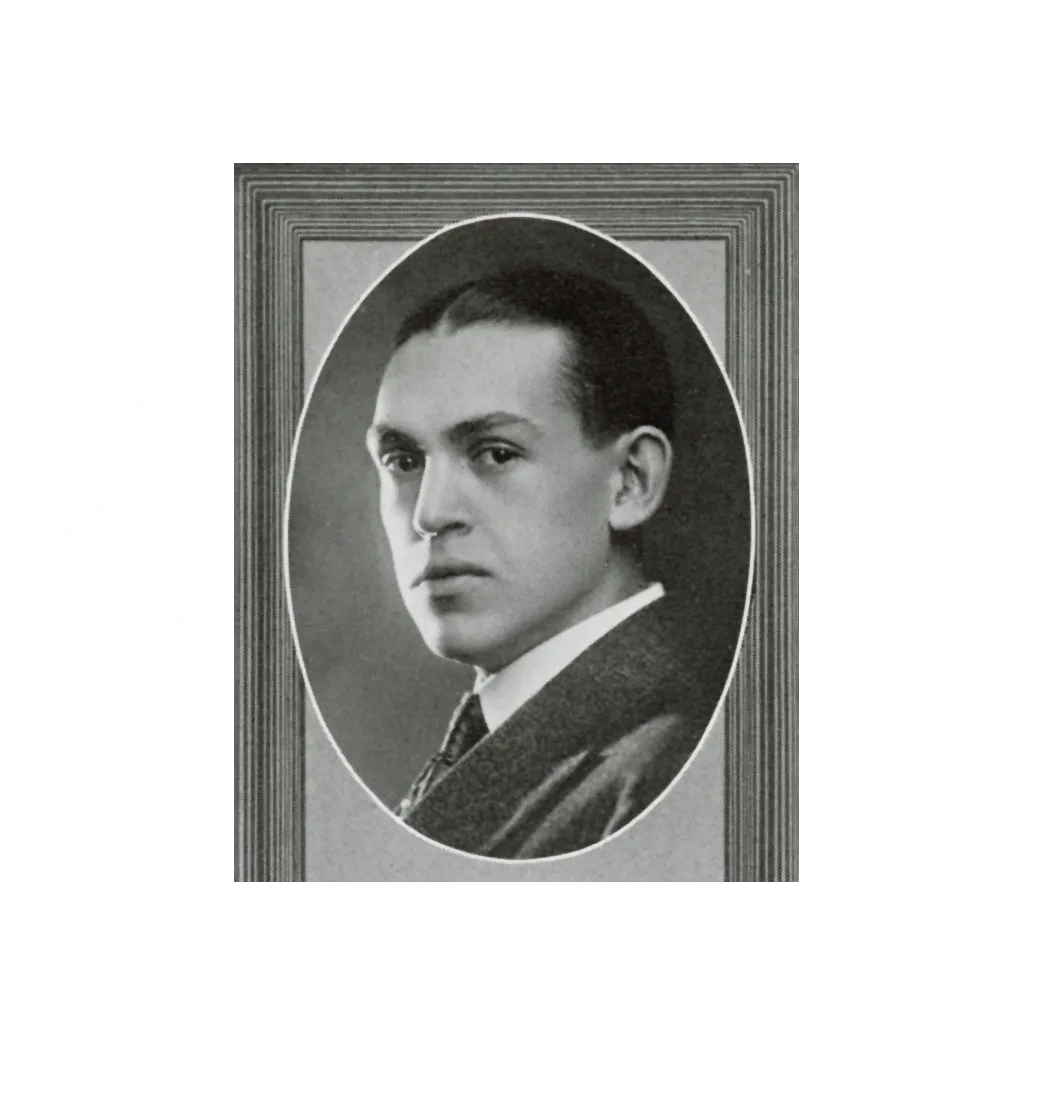
- 1923
Ernest Aranibar
In 1923, a new chapter was written in RPI’s storied history—Ernest Aranibar became the Institute’s first graduate from Bolivia. This milestone wasn’t just an individual achievement; it symbolized RPI’s global impact and its ever-expanding international community.
Ernest Aranibar didn’t merely earn a diploma; he shattered geographical barriers, paving the way for generations of global scholars to follow. His journey from Bolivia to RPI’s hallowed halls in Troy, New York, demonstrates the Institute’s enduring commitment to inclusivity and diversity.
As RPI celebrates 200 years of pioneering firsts, we salute Ernest Aranibar and all who dare to transcend borders for the sake of education and innovation. Here’s to another 200 years of worldwide firsts and boundary-breaking triumphs!
StoriesEventsJoin
Us